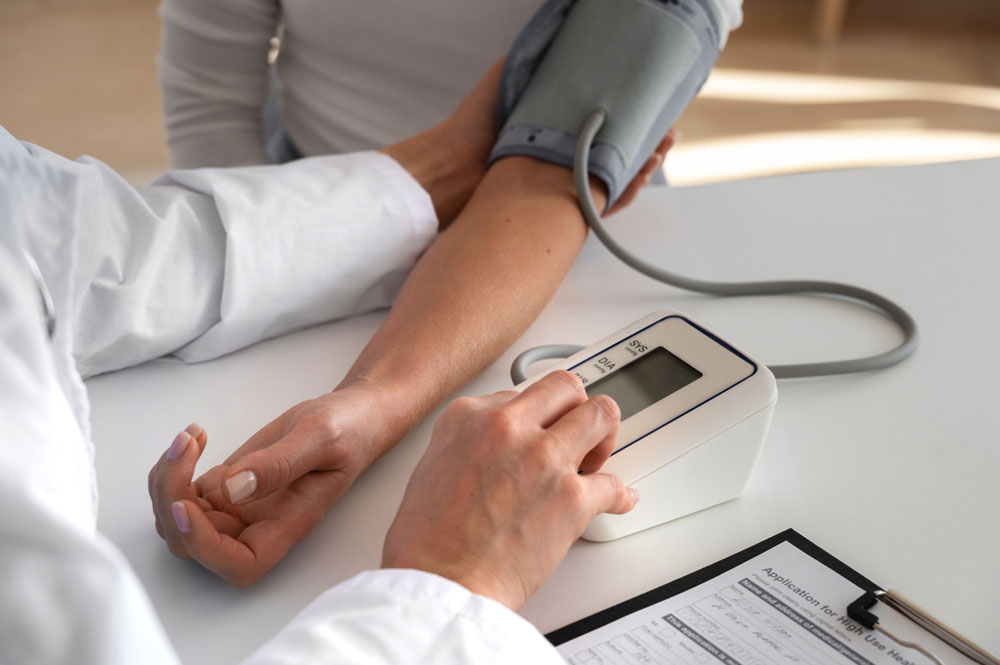
Blood Pressure Measurement
Blood pressure measurement is a medical procedure to determine it. It is the pressure created by the pumping of blood through the arteries with each beat of the heart and is important for health. It may seem like a simple procedure, but it requires the use of certain methods and devices to obtain accurate results.
What is It?
Blood pressure is the pressure of blood against the walls of arteries. It is expressed in two numbers: systolic and diastolic.
Systolic blood pressure represents the highest pressure in the arteries when the heart contracts, while diastolic blood pressure represents the lowest pressure in the arteries when the heart relaxes.
What are Blood Pressure Disorders?
It disorders are divided into two groups: hypertension and hypotension.
With hypertension (high blood pressure), it is higher than normal. If this condition persists for a long time, it can lead to serious health problems such as organ damage, heart attack or stroke.
In hypotension (low blood pressure), it is lower than normal. Symptoms usually include dizziness, fainting, tiredness or weakness.
What is High Blood Pressure (Hypertension)?
It is the pressure of blood in the blood vessels as it is pumped by the heart. It is expressed in two measurements:
- Systolic blood pressure (the pressure of blood in the blood vessels as the heart beats)
- Diastolic blood pressure (the pressure the heart exerts on the blood vessels at rest).
High blood pressure (hypertension) is a condition in which it is higher than normal in relation to the pressure inside the lining of the arteries. It can lead to heart attack, stroke and other serious health problems.
What is Low Blood Pressure (Hypotension)?
Low blood pressure (hypotension) is a condition in which it is below normal. Causes of hypotension can include heart problems, blood loss, hormonal imbalances, malnutrition and certain medications. Hypotension is often minor and only temporary. However, in some cases it can indicate a serious health problem.
What is Orthostatic Hypotension?
Orthostatic hypotension is a condition in which blood pressure drops abnormally when a person stands up. Normally, it drops slightly when standing up. However, the body compensates for this drop by increasing the heart rate and constricting blood vessels. In orthostatic hypotension, these mechanisms are not effective enough and it drops abnormally. This can cause symptoms such as fainting, dizziness or loss of balance.
What Causes Hypotension?
There are many causes of hypotension. Some of these causes are as follows:
- Dehydration (Loss of fluid)
- Heart problems (heart failure, heart attack, irregular heartbeat, etc.)
- Endocrine problems
- Neurological problems
- Medicines (some medicines that can lower blood pressure)
- Other factors (excessive body temperature, bleeding, infection, alcohol use, etc.)
How to Measure Blood Pressure and What Should Be Considered?
It is usually done using a cuff placed on the upper arm. This cuff is inflated by a pump to provide the pressure needed to measure it.
During the measurement, a stethoscope is used to listen to the sounds in the artery in the lower arm so that the heartbeat of the blood can be heard. This procedure provides measurements of systolic and diastolic it.
Things to consider when measuring blood pressure are as follows:
- Rest for 5 - 10 minutes before measurement.
- Before the measurement, substances that may affect it such as smoking, caffeine and alcohol should be avoided.
- The level of the arm should be at heart level.
- The measurement should be done on both arms and the results averaged.
- Sit in a comfortable position.
- Measurement should be done at the same time of day and under the same conditions.
Frequently Asked Questions
-
If it drops, blood carrying enough oxygen and nutrients cannot be pumped sufficiently throughout the body. The brain, heart, kidneys and other organs do not receive enough blood and oxygen. This can cause symptoms such as dizziness, weakness, blurred vision, fainting, fatigue, pallor, cold sweats and even shock.
-
It is normally around 120/80 mmHg. The blood pressure levels at which it is dangerous are different in cases of high it (hypertension) and low it (hypotension).
-
Hypertension is a blood pressure above 140/90 mmHg and in the long term can lead to heart attacks, strokes, kidney disease and other serious health problems.
-
Hypotension is when blood pressure is lower than normal. However, dangerous levels of hypotension vary. Generally, values below 80/50 mmHg are considered dangerous.
-
The factors that cause blood pressure to rise are as follows:
- High salt consumption
- Obesity or overweight
- Inactivity
- Stress and anxiety
- High alcohol consumption
- Cigarette smoking
- Genetic predisposition
- Aging
- Diabetes
- Kidney disease or disorders
- Thyroid problems
- Sleep apnea
-
It should ideally be between 90/60 mmHg and 120/80 mmHg.
-
Orthostatic hypotension is more common in people with certain risk factors, such as older people, those who have to stand for long periods of time, heart patients, Parkinson's patients, diabetics, those with brain and spinal cord injuries, and those taking certain medications.
-
First, lifestyle changes such as increasing fluid and salt intake, regular exercise and proper diet are recommended. In some cases, medication may also be required.
-
Treatment options may vary depending on the severity o


